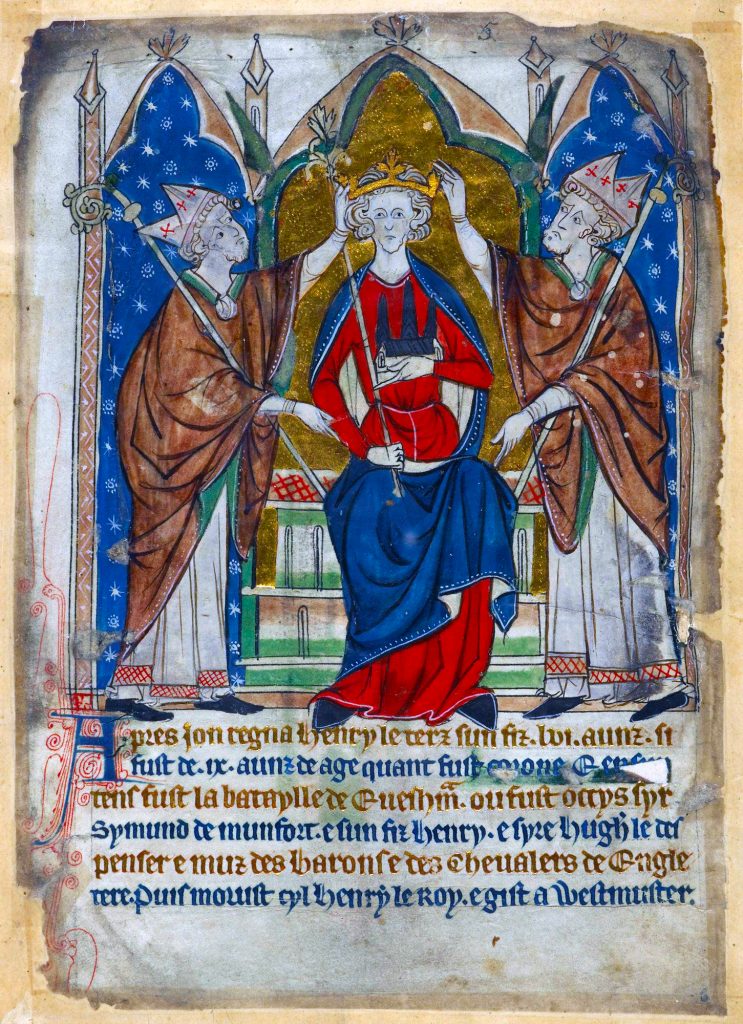- +44 7391 388154
- admin@oxsummerschools.co.uk

After the Norman Conquest of 1066, England emerged in a new role on the European stage, either conquering or dominating its neighbours in the British Isles (Wales, Ireland, and Scotland) and becoming embroiled in a series of conflicts in continental Europe and the Holy Land.
The course will cover three centuries following the Norman Conquest. It is structured around key witnesses – from the Bayeux Tapestry and the Domesday Book to Magna Carta – to explore the relationship between Norman England and its neighbours, rivals, and enemies in the British Isles and beyond. We will trace the continuity and disruption in the aftermath of William the Conqueror’s arrival in 1066, and draw upon the rich experience gained by visiting historic sites in Oxford and elsewhere.
Week 1: Conquest and colonisation
This period saw a series of dramatic conquests: those of Cnut in 1016, Duke William in 1066, and Edward I’s campaigns in Wales and Scotland in the late thirteenth century. England’s connection to a wider world also changed– from the 1150s, it was part of the enormous Angevin Empire, which stretched from the Scottish borders to the south of France– but the loss of Normandy in 1204 had a dramatic impact on the scope of English activities. These political changes wrought important shifts in identity for both the conquered peoples and their conquerors. The Danish Cnut encouraged the development of a new Anglo-Scandinavian class, and the Norman Conquest ushered in a new Anglo-Norman elite who spoke French rather than English, and held lands on both sides of the English Channel. By 1300, English people and institutions had spread into most parts of the British Isles, with important implications for development of identities in these areas. Close up: The Bayeux Tapestry
Week 2: Economy and society
The political changes in week one brought with them important changes in the society and economy of the British Isles. The demands of regular warfare created a system of land tenure geared to provide fighters for the king and his men, and contributed to the emergence of a distinct class of knights. But this wasn’t a one-way process. Kings needed money to maintain themselves and their followers, and their scope for action was shaped by what they could manage to raise from the country. The means by which money and resources were acquired and the records which this left give a valuable insight into the economic conditions and administrative structure. We know less about the ways in which Irish, Welsh and Scottish society and economics functioned at the beginning of this period, but we do have some insights. Close up: The Domesday Book
Week 3: Law and institutions
During this period there were important changes in the relationship between kings and the law, particularly in the ability to hold kings to account. The steady development of this power reached a crescendo at Magna Carta, but continued to be an explosive issue into the later thirteenth century and beyond. In particular, the role of the various ‘stakeholders’ such as the Church, the barons, the cities, as well as England’s neighbours such as Wales and Scotland in pushing forward these changes will be explored. Close up: Magna Carta
Week 4: Religion and the church
Religion had its own role to play in a conquered or conquering society. The position of English churches and monasteries after the Norman Conquest is a useful case study for how complex this role could be. Religion could have political and military parallels, as can be seen in the extension of English control into Wales under the auspices of the archbishop of Canterbury, and attempts by the archbishop of York to extend his rights and claims over the dioceses of Scotland. Lay involvement in religion helped to drive an enormous expansion in monastic life, and the popularisation of new orders. Religious practices also developed, increasingly focused on the parish church, as devotional texts and images were created to meet the needs of the laity. Close up: Monastic Oxford; Glastonbury Abbey; Tintern Abbey
Week 5: Language and literature
In this final week we will focus on texts, both Latin and vernacular, to explore what they tell us about language and identity in an age of conquest and colonisation. The language, or often, languages which a person spoke was an important component of the culture with which they identified. At the start of our period, Old English enjoyed a high status in England as an official administrative language alongside Latin. After the Norman Conquest, this was replaced quickly by Latin alone, with French as the language of the elite. English survived as a language of lesser status, before reviving from the thirteenth century. Outside England, Latin replaced Old Irish as the language of administration in Irish areas brought under Anglo-Norman control. Other vernaculars– Welsh, Scots, Gaelic and Norse are more difficult to track, but can shed important light on their societies. Close up: medieval religious writings, Marian lyrics, romances, chronicles
Bartlett, Robert, England under the Norman and Angevin Kings 1075-1225 (Oxford, 2000)
Frame, Robin, The Political Development of the British Isles 1100-1400 (Oxford, 1990)
We offer great services to our clients










Magdalen College
Lorem ipsum dolor sit amet, consectetur adipiscing elit. Donec eros elit, pretium et adipiscing vel, consectetur adipiscing elit.
See All Features